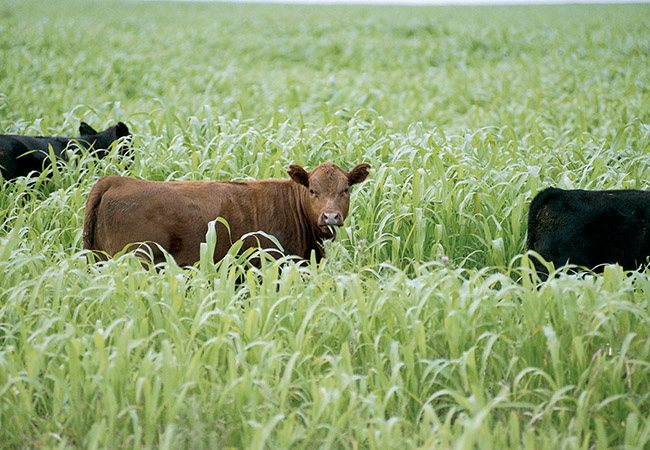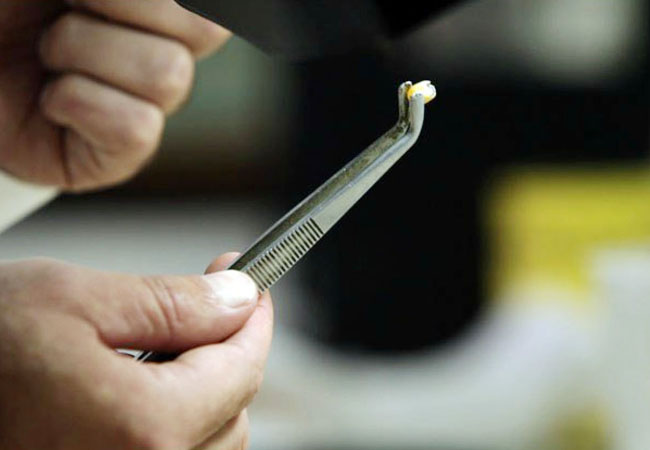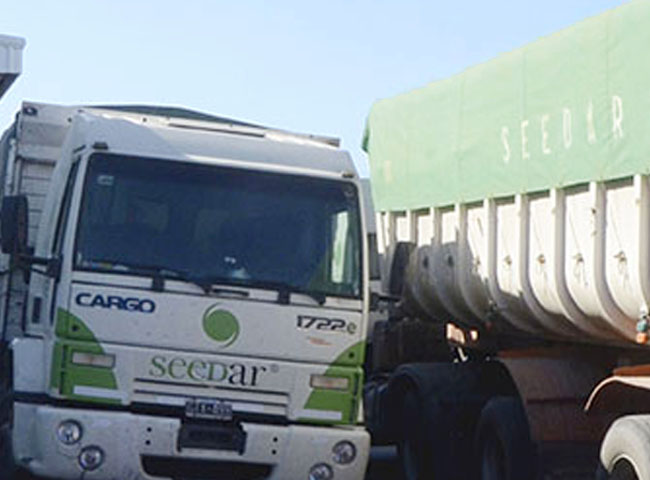S E E D S
AGRONOMIC CHARACTERISTICS:
- Medium habit, semi-creeping.
- Great tillering capacity.
- Dark green leaves.
- It has a high potential for grain yield and high test weight.
- Excellent behavior to overturn and shelling.
SOWING TIME:
- Fodder production: late February to mid-April depending on the region.
- Density from 220 to 280 pl/m2.
GRAIN PRODUCTION:
- Mid-June to mid-July, depending on the region with a density of 220 to 250 pl/m2.
- Panojamiento cycle is 103 days at optimum time.
PRODUCTIVE CHARACTERISTICS:
- Higher and more stable forage production than the most widely planted cultivars. It produces 10% more forage than Violeta INTA.
- Due to its outstanding anchorage and regrowth, it is recommended for intensive grazing.
- It is characterized by its high production in late autumn and winter, a time when forage is scarce in most dairy/livestock production systems.
- Outstanding rusticity, standing out for its excellent behavior in cold and dry conditions.
SANITARY BEHAVIOR:
- Tolerant to barley mosaic virus.
- It has better rust behavior than Violeta and Graciela.
- Tolerant to bacteriosis.
- Tolerant to brown spot caused by helminthosporium avenae.
AGRONOMIC CHARACTERISTICS:
- Medium habit, semi-creeping.
- Very good tillering.
- Very large leaves.
GRAIN CHARACTERISTICS:
- White grain of good hectoliter weight and excellent industrial quality.
PRODUCTIVE CHARACTERISTICS:
- Excellent forage production potential both for cutting and for direct grazing.
- Excellent initial growth.
- Excellent production in second and third use.
- Outstanding regrowth potential even in adverse conditions.
- Unsurpassed tolerance to stress due to frost and drought.
- Unsurpassed production stability under various environmental conditions.
- Resistant to leaf rust and good behavior against stem rust.
AGRONOMIC CHARACTERISTICS:
- Height tall, semi-erect.
- Nice collage.
- Leaves very large.
GRAIN CHARACTERISTICS:
- White grain with a good hectolitre weight (higher than the marketing base)* and excellent commercial quality.
- *Average of the 3 years of trials.
PRODUCTIVE CHARACTERISTICS:
- Excellent forage production potential both for cutting and for direct grazing.
- Good initial growth.
- Excellent production in second and third use.
- Good regrowth potential.
- Good tolerance to stress due to frost and drought.
- Low susceptibility to leaf rust and good behavior to stem rust.
- Unsurpassed production stability under various environmental conditions.
It is a white oat crop (avena sativa) that is characterized by its high production and stability in forage production in the different agroecological regions of Argentina. It has great adaptability both in different managements and environments. It has a semi-erect juvenile growth habit, with great tillering opacity and an intermediate green leaf color. It has an excellent regrowth.
Marita INTA has a very high and stable forage production throughout the cycle, with outstanding growth just before the end of winter. It has excellent cold behavior and very good health against the main diseases.
Marita INTA is a superior cultivar of Violeta INTA, the most widely planted cultivar, preserving the great adaptability of Violeta INTA and surpassing it in forage production by 12% on average in more than 10 trials in the last 3 campaigns. In this same period, it surpassed the Graciela INTA and Cristal INTA cultivars by 1896 and 25% respectively.
Marita INTA stands out for its stability and adaptability, maintaining a high production of paste. It is recommended for intermediate environments or environments with great variability in terms of climatic and soil conditions. It has a very good response to intensive handling.
Marita INTA has an excellent sanitary behavior.
It is tolerant to the barley yellow mosaic virus (BYDV) that affects the crop towards the end of autumn and beginning of winter, increasing in years with droughts and strong frosts.
It has good behavior against leaf rust (Puccinia coronatta) and stem (Puccinia gramineanum), being tolerant to the most common races, similar to Carlota INTA. It is tolerant to brown spot caused by Hemiltosporium avenae.
SOWING TIME:
- Forage production: End of February to end of March, depending on the region, with a density of 220 to 280 plants per hectare.
- Grain production: Mid-June to mid-July, depending on the region, with a density of 200 to 250 plants per square meter. The panicle cycle is 97 days at the optimum time.
Marita INTA has a high grain yield potential, with a grain with a high hectoliter weight and a thousand grain weight of 33 grams. This new cultivar is highly recommended as a dual purpose. It has excellent overturning and shelling behavior.
Lucía INTA cultivar of white oats (avena sativa), is characterized by its very high forage production, excellent health behavior, great response to good environments and intensive management.
Lucía INTA has a semi-erect juvenile growth habit, great tillering capacity and dark green leaf color. Excellent regrowth and cold tolerance.
Lucía INTA very high forage production, standing out for combining a high initial production with a high growth rate during winter and early spring.
Lucía INTA is a cultivar that surpasses Graciela INTA, a cultivar that has stood out in good environments, both for its high forage yield potential, as well as its sanitary behavior and its high growth rate in the coldest months. In the town of Bordenave, in 2014, rainfall was well above average, generating a good environment.
In it, the cultivar Lucía INTA stood out.
Lucía INTA stands out for its high potential for forage and grain yield, for its excellent sanitary behavior, especially against leaf rust, and for its exponential response to good environments.
SANITARY BEHAVIOR:
- It is tolerant to the barley yellow mosaic virus (BYDV) that affects the crop towards the end of autumn and beginning of winter, increasing in years with droughts and strong frosts.
- It has excellent behavior against leaf rust (Pucciniacoronata) as shown in greenhouse evaluations.
- It is tolerant to bacteriosis.
SOWING TIMES:
- Forage production: End of February to end of March, depending on the region, with a density of 220 to 280 plants per hectare.
- Grain production: Beginning of June to beginning of July, depending on the region, with a density of 200 to 250 plants per square meter. The panicle cycle is 114 days at the optimum time.
Lucía INTA has a very high grain yield potential, with a high test weight grain and a thousand grain weight of 33 grams. This new cultivar is highly recommended for dual purpose and whole plant silages. It has excellent overturning and shelling behavior.
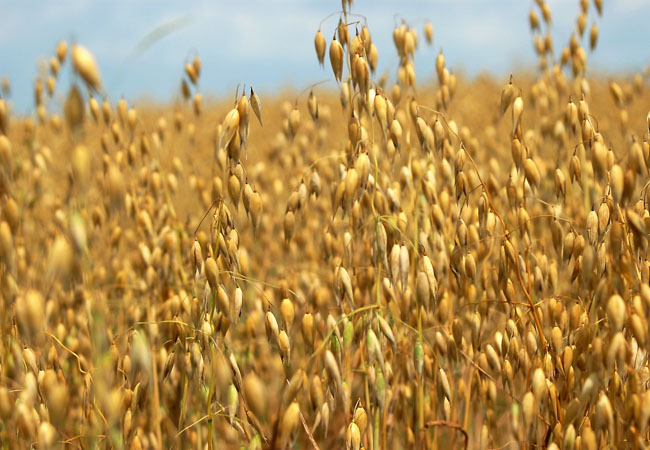
The new INTA Silera is a grain barley with very high grain yield potential, generating a large amount of green biomass, combined with excellent quality attributes in the whole plant silages generated, which is why it lives up to its name.
SILERA INTA BARLEY
It also has an excellent sanitary profile, great tolerance to overturning and an intermediate cycle, characteristics that complement and enhance its attributes.
Silera INTA has a high grain yield potential compared to the most important commercial cultivars in terms of planted area, with an average of 6,357 kg/ha, against 6,111, 5,651 and 5,371 kg/ha for the Andreia, Shakira and Scarlett cultivars respectively. in the last three years in the town of Bordenave.
Silera INTA has a very good sanitary behavior against the main diseases, it is tolerant to brown spot caused by Bipolaris sorskiniana, moderately tolerant to web spot caused by Drechsfera teres and leaf rust caused by Puccinia coronata. It is moderately tolerant to scald, caused by Rinchosporium secalis, which in case of severe attacks must be applied fungicide, being surpassed only by the Shakira cultivar for this disease. This excellent sanitary behavior allows lowering production costs since, except for very severe attacks, it avoids the application of fungicides.
Silera INTA shows very good behavior in drought and cold conditions in the vegetative state.
The optimal dates are from June 10 to 30 in the North Pampean Region and from June 25 to July 20 in the South Pampean Region. The optimum plant density is 250 plants per square meter.
Silera INTA stands out for the production of dry matter for silage and for a better quality of silage forage. Table 1 shows the data from a comparative yield test with four repetitions, where significant differences were recorded in the production of dry matter and in the quality of the silage after 2 months of making the silo.
Silera INTA is a technological contribution to help increase and improve the production and quality of forage reserves in intensive meat and milk plantations, increasing the productivity and stability of livestock production in a sustainable manner.
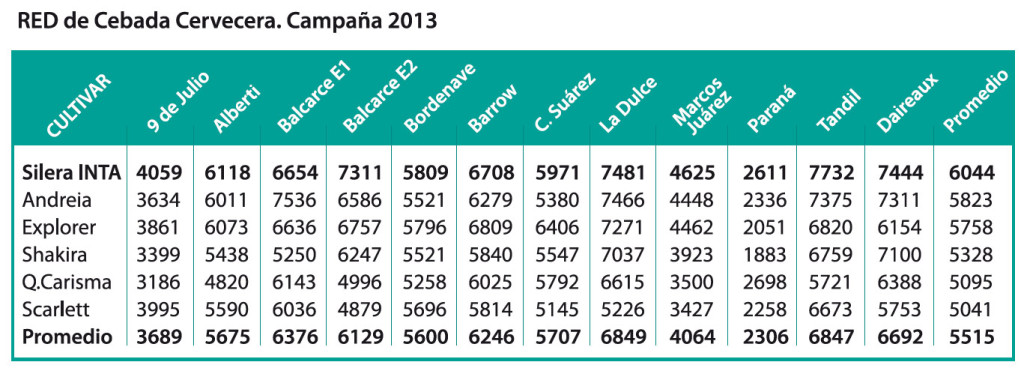

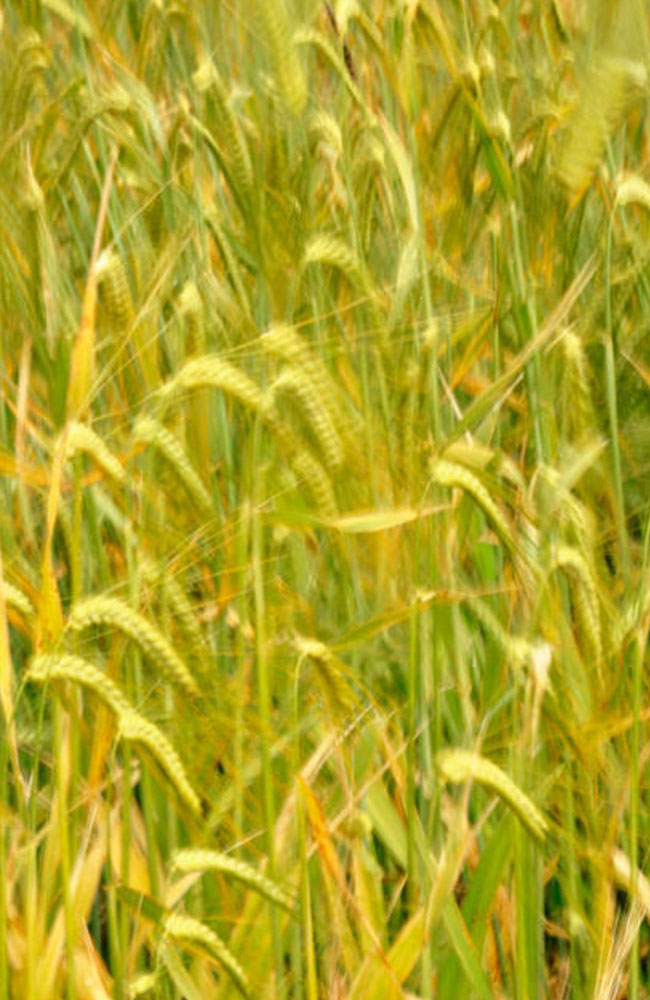
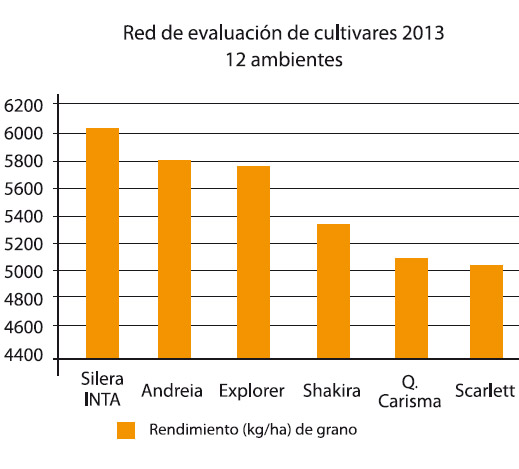
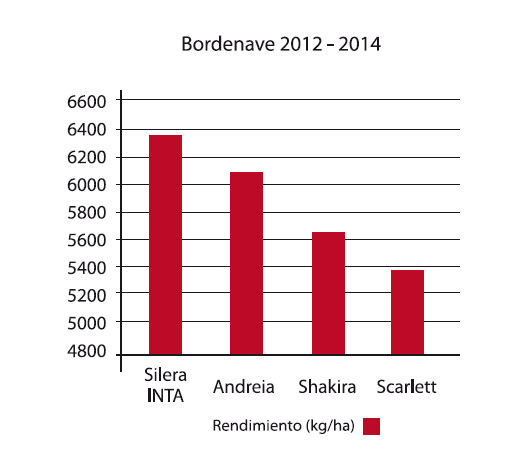
LEGUME SEEDS
Seedar 60
- Variety with medium winter dormancy that combines production with speed of regrowth.
Characteristics
- Group 6
- High production
- High persistence
- High tolerance to aphids
- High foliar and root health
- Ideal for consolidating with grains
- Persistence 3 years: 97% of plants
- Optimum leaf/stem ratio
Disease Tolerance Levels
- Phytophthora: Very high
- Fusarium: Medium
- Anthracnose: High
- Bacterial Wilt: Medium
- Wilting Verticillium: Media
Pest Tolerance Levels
- Green aphid: High
- Spotted aphid: Very high
- Blue aphid: High
- Root nematode (Meloid. Hapia): Medium
- Root nematode (Meloid. Incognita): Medium
Seedar 80
- Variety without winter dormancy of very high production.
Characteristics
- Group 8
- High production
- High persistence
- High regrowth speed
- High tolerance to aphids
- High foliar and root health
- Persistence 3 years: 94% of plants
- Optimum leaf/stem ratio
Disease Tolerance Levels
- Phytophthora: Good
- Fusarium wilt: Very high
- Anthracnose: Very high
- Bacterial Wilt: Good
- Wilting Verticillium: Good
Pest Tolerance Levels
- Green aphid: Very high
- Spotted aphid: Very high
- Blue aphid: Very high
- Root nematode (Meloid. Hapia): Medium
- Root nematode (Meloid. Incognita): Very high
- Stem nematode: Medium
Supersonic
White clover: Ombú variety (Trifolium repens)
- It is characterized by its large blade.
- Great forage production during autumn, winter and spring.
- It has strong stolons that ensure its survival in dry and hot summers.
- Variety of great persistence.
Red clover: Lapacho variety (Trifolium pratense)
- It is characterized by being early cycle.
- “Double cut type”, high forage production.
- Quick regrowth. Its production curve begins at the end of winter, continuing in spring, summer and autumn.
- It is resistant to antacnose, which gives it high persistence.
GRAMINEAS
Fescue: Sofia variety
Arundinacea SOFIA
- It is characterized by its great seedling vigor that favors its rapid implantation.
- It is very tillering, with rapid regrowth after grazing.
- Very good productivity, especially in winter and spring, and has high palatability and digestibility.
- It stands out for its ability to adapt to acid and/or alkaline soils (pH between 4.5 and 9).
- Supports water stress. Presents resistance to rust.
Rye Grass: variedad pastizal
Pastizal Raygrass Tetraplide – Tipo Wester (Lolium multiflorum (4n) westerwoldicum)
- Se caracteriza por tener porte semierecto, hojas anchas de color oscuro.
- Su implantación es rápida y muestra un buen rebrote después del corte.
- Presenta resistencia a Roya (la presencia de esta enfermedad produce bajas en la calidad del forraje).
Native Brome: Vasca variety
(Bromus unioloide)
- It is characterized by having broad, deep green leaves.
- It establishes quickly, has great tillering, produces throughout the year, maximizing its yields during winter and spring.
- It presents good leaf health and more than 70% of its plants behave as perennials.
Photosensitive Forage Sorghum: Don Hugo photosensitive
Photosensitive hybrid with rapid development with fine leaves and fine stems, strong tillering and very good resistance to lodging. If it is not grazed or cut, it reaches more than 3 m in height after 60 days of planting.
This photosensitive plant does not flower until 100 to 120 days after sowing. In March, depending on the weather, it can give panicle rudiments that do not form the grain. Having a period of maximum use over time, high yield potential due to its great tillering capacity, with excellent nutritional quality and for longer.
Extraordinary regrowth and green material when cut. Excellent leaf/stem ratio, which gives it excellent digestibility and palatability.
It is recommended both for grazing, chopped or silage, in this last form of use low cost and high quality silo is obtained, with a great response in the production of meat and milk.
| PHOTOSENSITIVE SORGHUM CHARACTERISTICS | |
| Material | Photosensitive |
| Sugar | 12% in stems |
| Palatability | Excellent |
| Stems | Very Fine |
| Height | 260-300 cm |
| Regrowth | Very Good |
| Yield | + de 100.000 MV/ha |
| General | Direct Grazing |
| Very Suitable for Rolls and Bales | |
| Very good health | |
Adaptation Zone: all Livestock areas
Planting rate: 20 to 22 kg/Ha
Forage Sorghum: Pastoral
- Wide adaptation to all livestock areas
- Excellent forage production and regrowth capacity
- Juicy stems with a high sugar content throughout the growth period.
- Very good tolerance to the main leaf diseases
- Recommended for direct grazing, silage and haymaking.
- Very good leaf/stem ratio
- Presentation in bags of 25 kilos.
Sansón BMR
- Very good adaptation to different environments and livestock areas.
- Typical forage sorghum for direct grazing.
- Greater productivity especially in the second cut.
- Better palatability and higher grain tannin content to ensure birth.
- Very good behavior against leaf diseases.
- Presentation in bags of 25 kgs.
Huinca
- Double purpose sorghum
- Apt for grain harvest
- Of very good yield
- Cycle Intermediate of very high potential of grain yield.
- Adequate for entire plant chopper
- Excellent forage behavior*
- It also has a remarkable behavior for its use as entire plant silo
- Its cane is sweet and it has an excellent stubble volume (19/20 tn/ha dry matter)*
- Height 1,5/1,8.
- Content of tannins high.
- Blooming days: 79
- Sowing days: 122
- Kind of panicle: complete.
- Kind of drying: excellent.
- Stubble: abundant.
- Allows to ensile or harvest the grain.
- Allows getting silos with high power content, resulting in bigger profits of weight and bigger milk production.
- Good capacity to issue tillering
- Presentation 20 kg bags
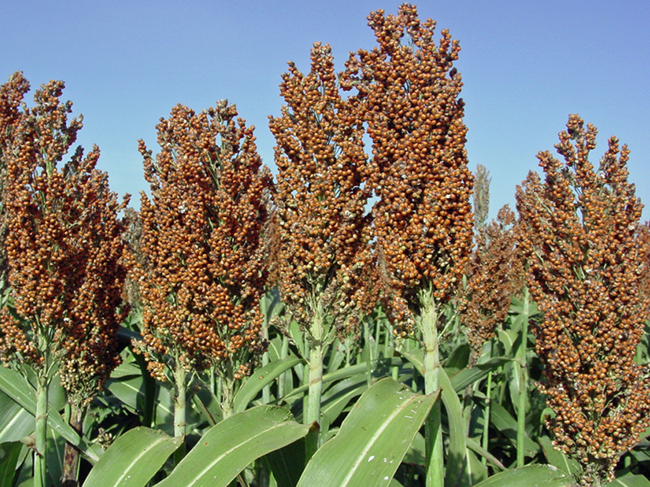
- Simple hybrid
- Days as from emergency till the appearance of the stigmas in a 50% of the plants: 68 days
- Days as from the appearance of the stigmas in a 50% of the plants, till the optimum harvest moment: 75 days
- Days as from the appearance of the stigmas in a 50% of the plants, till physiological maturity: 45 days
- Complete cycle: 143 days
- Very plastic
- Plant height: 1,80 mts.
- Insertion of main spike: 0,80 mts.
- Good lodging resistance
- Color orange
- Very high expansion
- Excellent performance potential.
- Grain: excellent
- Simple hybrid
- Days as from emergency till the appearance of the stigmas in a 50% of the plants: 64 days
- Days as from the appearance of the stigmas in a 50% of the plants, till the optimum harvest moment: 74 days
- Days as from the appearance of the stigmas in a 50% of the plants, till the physiological maturity: 54 days
- Complete cycle: 140 days
- Very plastic
- Plant height: 2,10 mts.
- Insertion of main spike: 1,05 mts.
- Very good lodging resistance
- Tendency to a second spike
- Color orange
- High expansion
- Extraordinary performance potential
- Simple hybrid
- Days as from emergency till the appearance of the stigmas in a 50% of the plants: 67 days
- Days as from the appearance of the stigmas in a 50% of the plants, till the optimum harvest moment: 77 days
- Days as from the appearance of the stigmas in a 50% of the plants, till the physiological maturity: 48 days
- Complete cycle: 144 days
- Very plastic
- Plant height: 1,80m
- Lodging resistance: Good
- Color: orange
- Expansion: very High
- Tendency to double spike: High
- Performance potential: Excellent
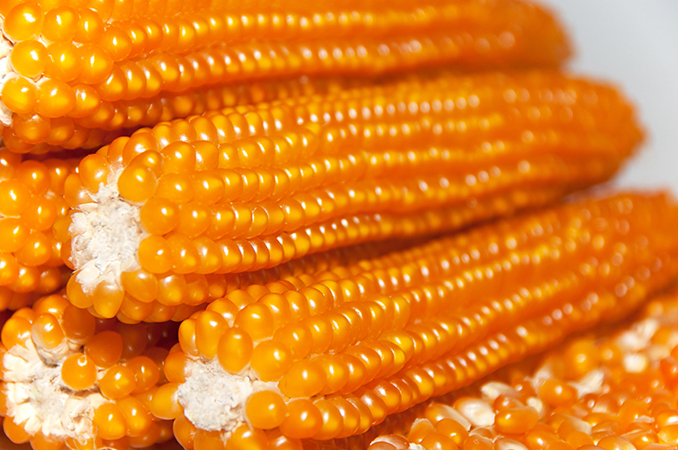
We export dry green peas
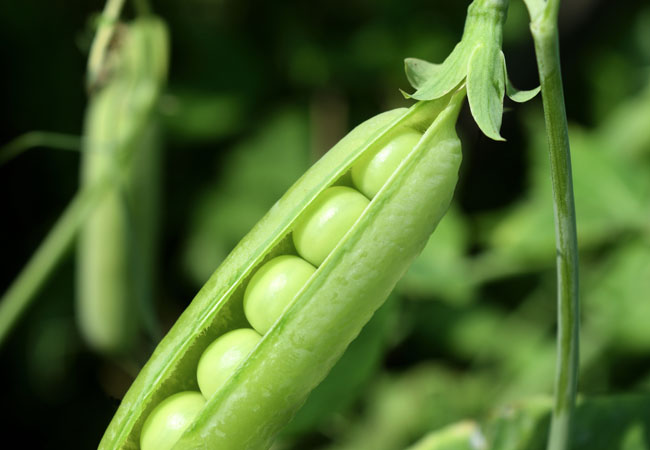
HIGH POTENTIAL FOR PERFORMANCE AND STABILITY, WITH A WIDE ADAPTATION ZONE
Rosana INTA 3.9 STS is a new cultivar developed by INTA that is characterized by having a high and stable grain yield potential, superior to compared commercial controls. It belongs to maturity group III, being long within the group.
Rosana INTA 3.9 STS is tolerant to glyphosate (RR) and incorporates tolerance to sulfonylureas (STS), adapting to all weed control strategies.
Rosana INTA 3.9 STS has very good health, being tolerant to the main diseases. It has an excellent tolerance to water deficit caused by temporary droughts, standing out in soils and regions with some limitations. In addition, it is characterized by being the cultivar with the highest protein content on the market.
Rosana INTA 3.9 STS is a widely adapted cultivar and due to its conditions it stands out in the entire western and southern strip of the Pámpana Region.
Highlights
Its tolerance to sulfonylureas allows it to strengthen integrated management strategies for resistant weeds. It has very good behavior in drought. It has very good sheath clearance. It adapts to second-hand crops. It is one of the cultivars with the highest protein content in grains.
CULTIVATE DESCRIPTION
Plant Characteristic: Semi Erect
Technology: RR-STS
Environment: High Potential
Maturity Group: III Long
Growth Habit: Indeterminate
Flower Color: Violet
Pubescence Color: Gray
Thread Color: Black
Weight of 1000 grains: 166 grams
Days to R 1: 1st sowing 62 / 2nd sowing 44
Days to R8: 1st sowing 151 / 2nd sowing 129
Branch Type: Intermediate
Sanitary Profile: Very Good
Root and Stem Base Rot (Phytophthora Sojae): Resistant R1, R3 and R4
Stem Canker (Diaporthe phaseolorum): Resistant
ADAPTATION ZONE
South Pampean Zone: High and medium Potential Environments for First and Second Planting, Central and Southern Córdoba and South of Santa Fe: High Potential environments for early First Planting
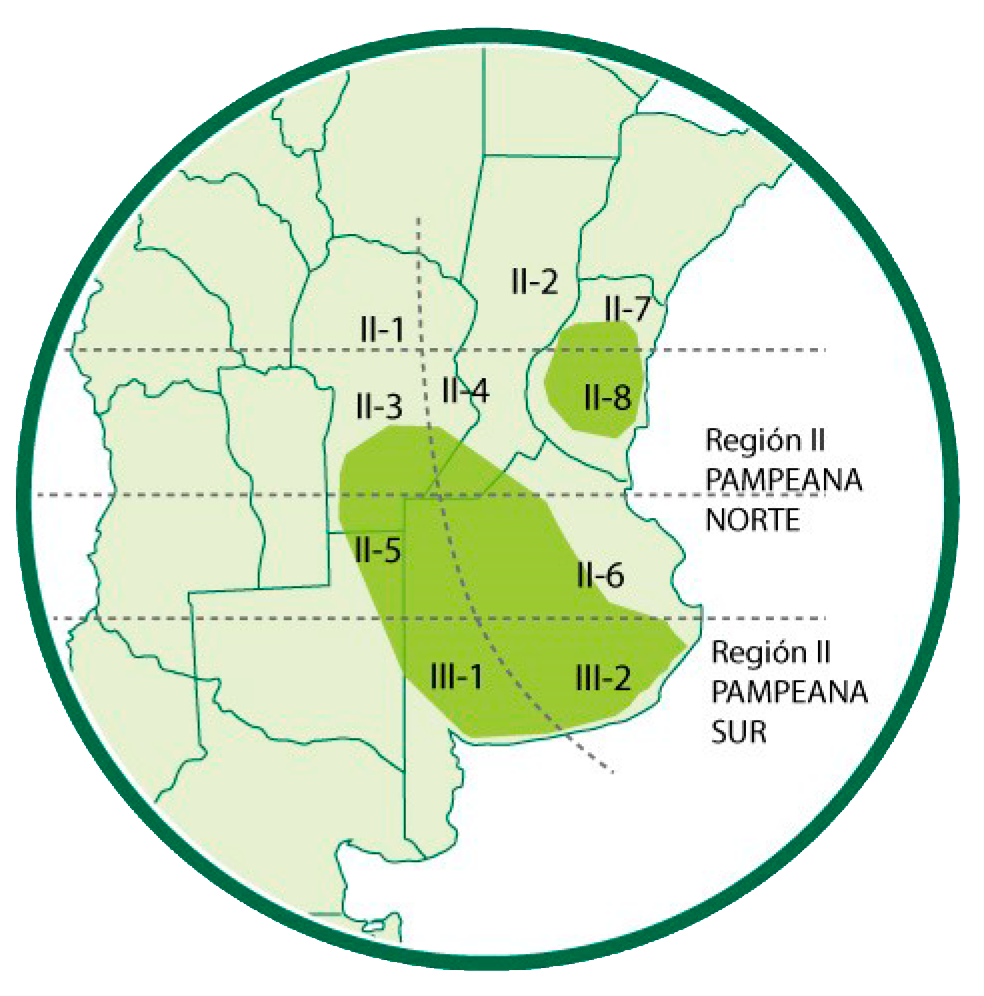
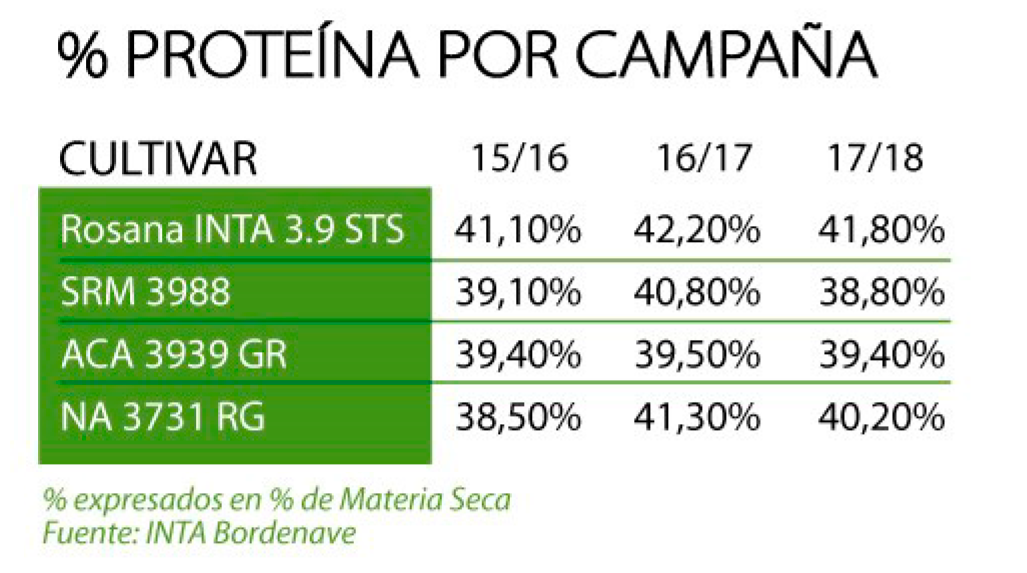 TABLE: RELATIVE YIELD OF CULTIVARS OF MATURITY GROUP III LONG BY SUB REGIONS AND SEASON 16/17
TABLE: RELATIVE YIELD OF CULTIVARS OF MATURITY GROUP III LONG BY SUB REGIONS AND SEASON 16/17
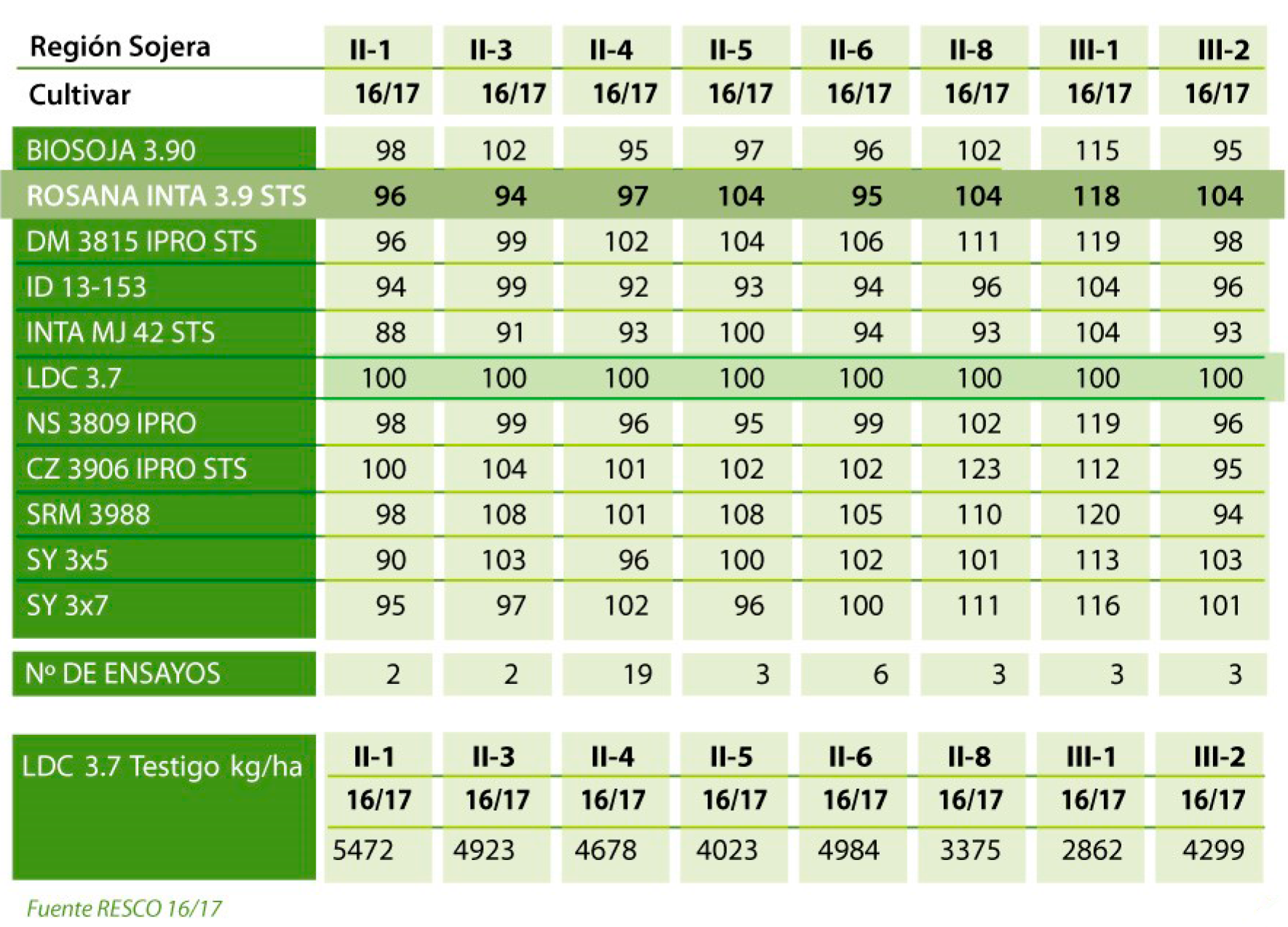
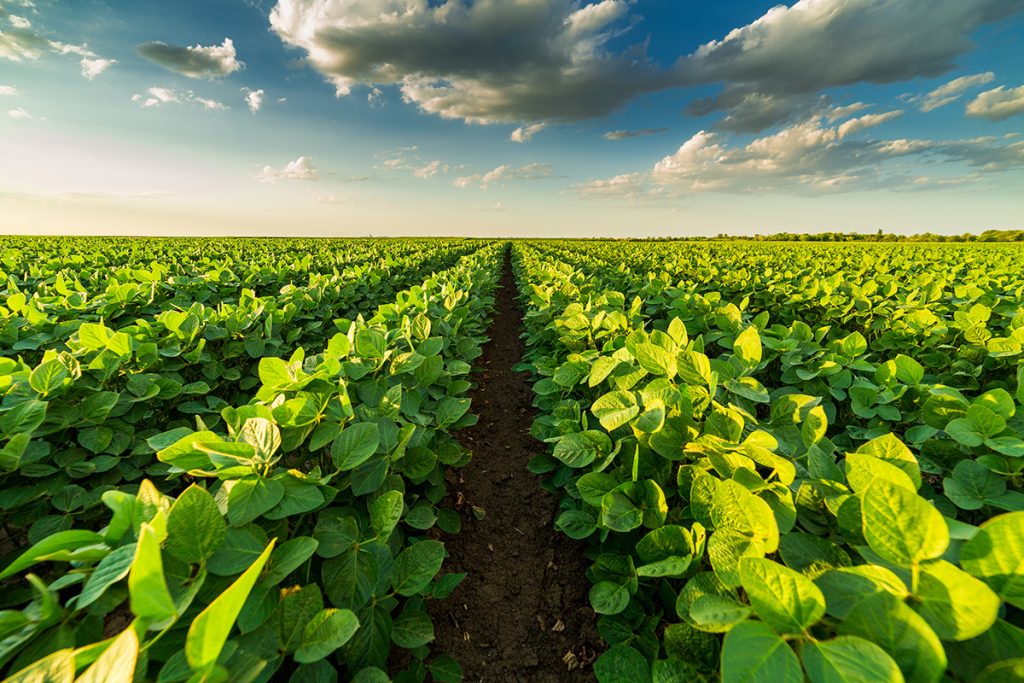
HB 90 INTA is a new and superior triticale cultivar that is characterized by its high potential for forage and grain production, its health and rusticity. It is an intermediate cycle cultivar of wide adaptability, intended for the production of forage and service crops.
Triticale HB 90 INTA has a semi-erect growth habit. Unlike other cultivars, it has rapid initial growth and excellent regrowth, which allows grazing to start earlier and not lose productivity.
In the town of Bordenave in the year 2022 it produced just over 12,000 kilograms of dry matter, demonstrating its high productive potential, much higher than the rest of the commercial cultivars.
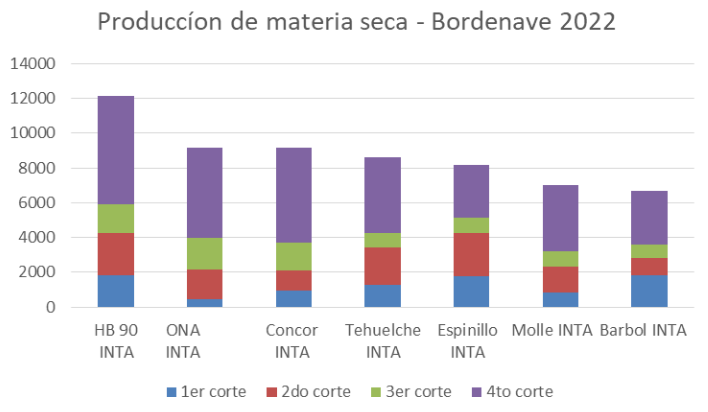
HB 90 INTA is ideal for service crops, since it combines an intermediate cycle with a high growth rate of both aerial and root biomass. This makes it generate a large amount of biomass in less time, increasing the efficiency in the use of water.
HB 90 INTA has an excellent sanitary behavior against the main diseases that affect the crop. It has an excellent behavior in the field against wheat yellow rust (Pucciniastriformis) and stem rust (Pucciniagraminis).
Triticales are characterized by their rusticity against dry and cold conditions. HB 90 INTA also excels in these aspects. It was selected in the town of Bordenave, where environmental conditions are more extreme than in the rest of the Pampean Region. Subsequently, it was evaluated in different locations, showing great adaptability to different environments and productive approaches. It is characterized by having excellent responses to favorable environmental conditions and nitrogen fertilization.
It is recommended to sow it from February 25 to March 15, with a density of 230 plants per square meter.
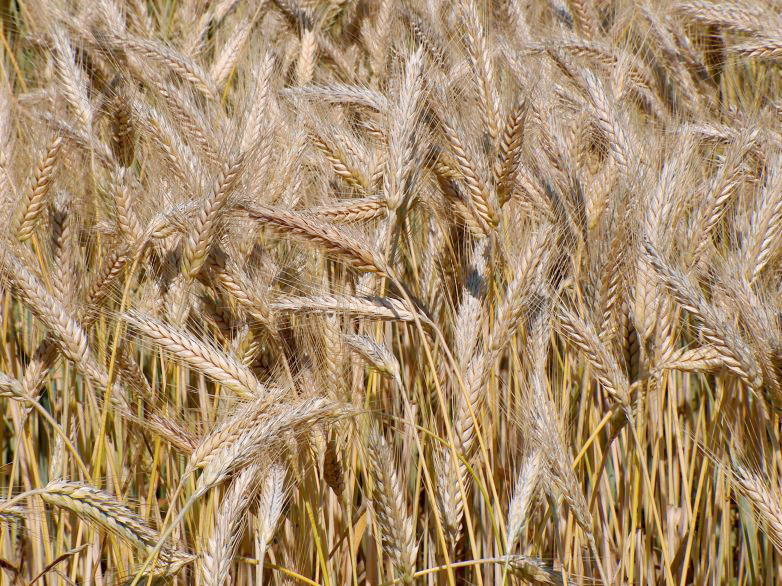
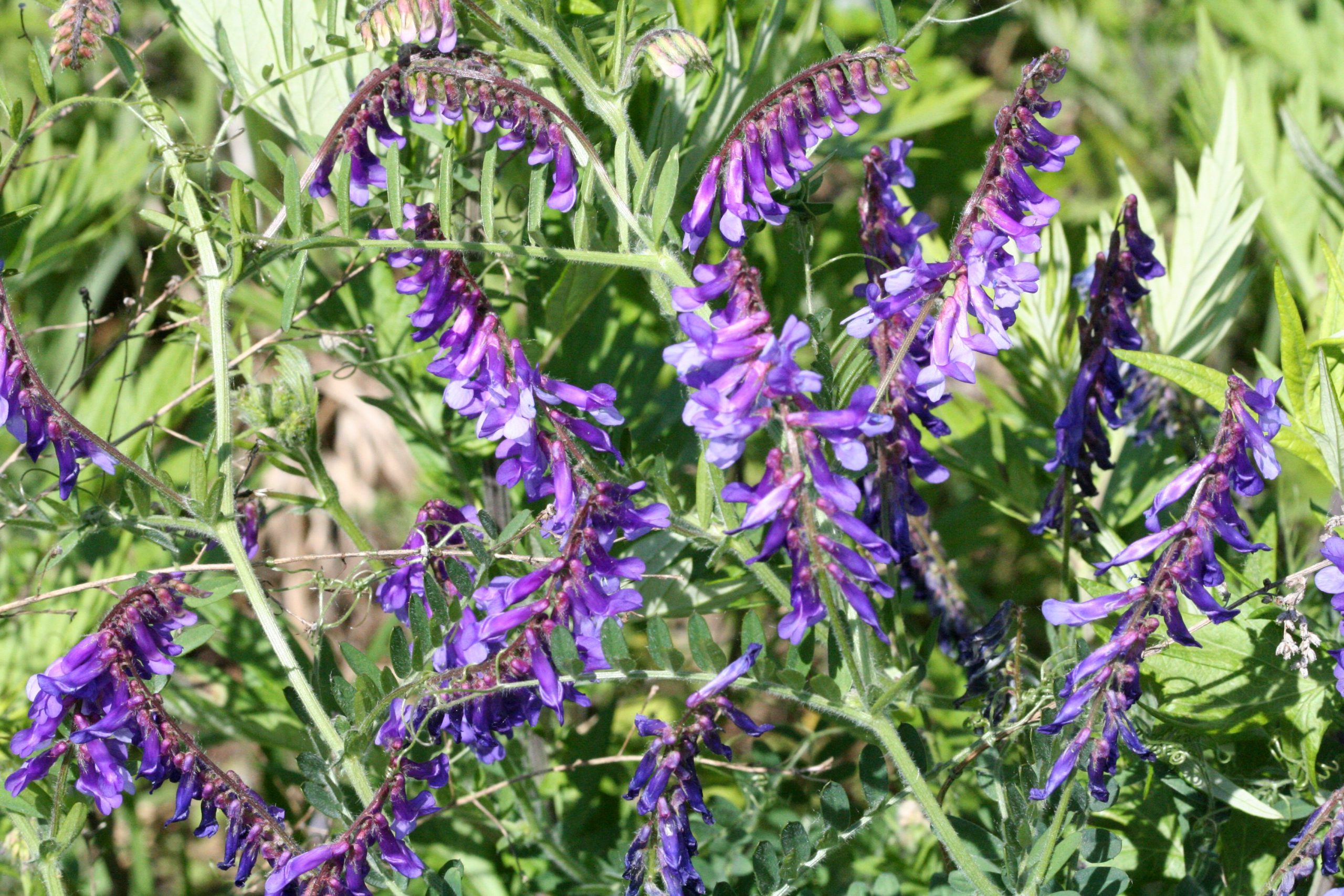
SEEDAR informs
FODDER CORN
In SEEDAR we have a great variety of forage seeds, which adapt to soils and weather throughout all livestock Argentina. Legume or bluegrass seed, with good yield. Contact us for advice and for doing your best purchase.
Quality control
COMPANY LABORATORY
In SEEDAR we have two plants (PERGAMINO and ARROYO DULCE) with laboratories of our own for following up and controlling seeds that are storage for its optimum conditioning and quality control.
SEEDAR informs
SERVICES / COMPANY LOGISTICS
Having our own fleet guarantees delivery in due time and form, at client needs. We do not just produce seeds, we add value and quality to seeds.
SEEDAR WITH WORLDWIDE PROJECTION




